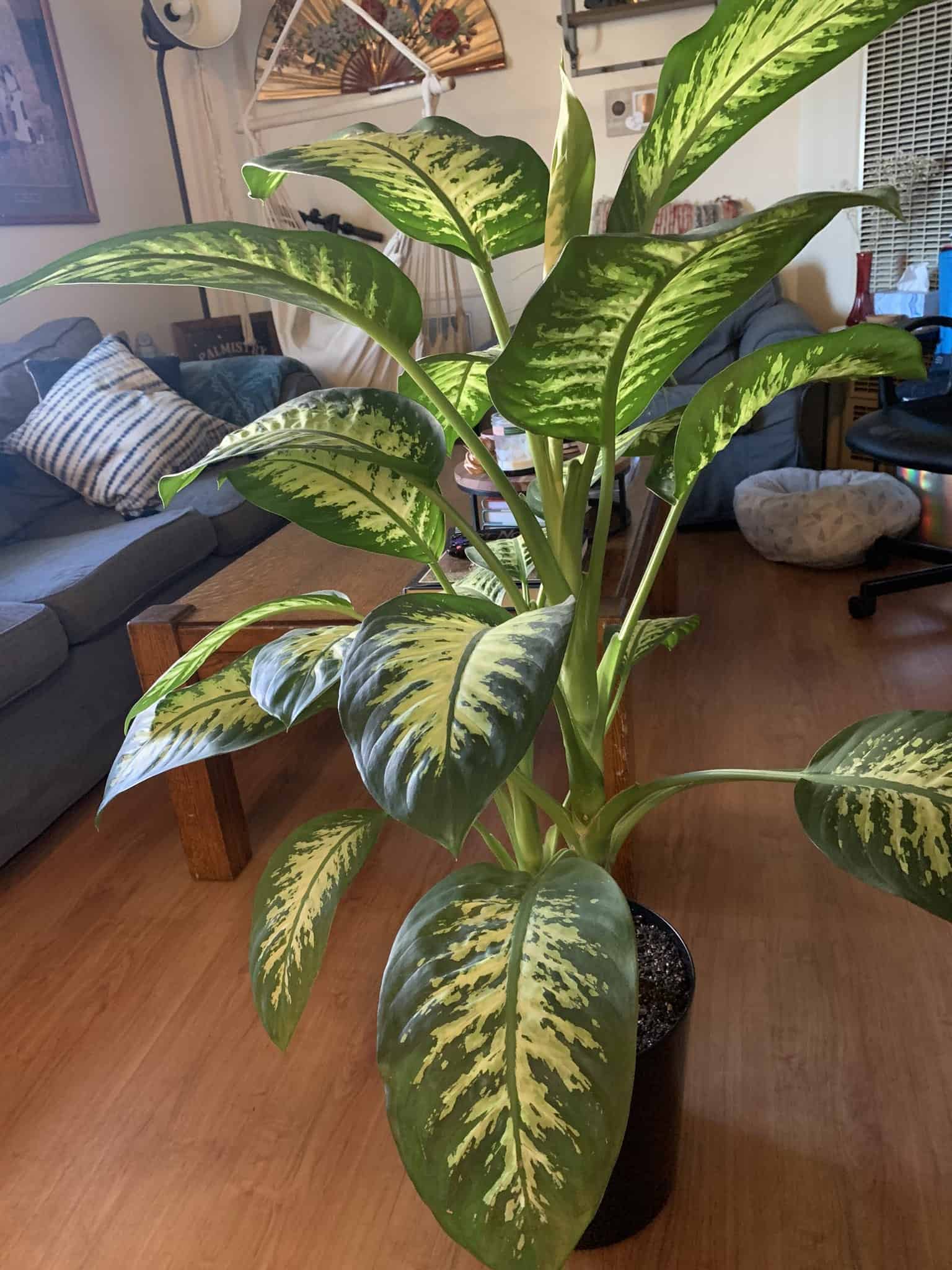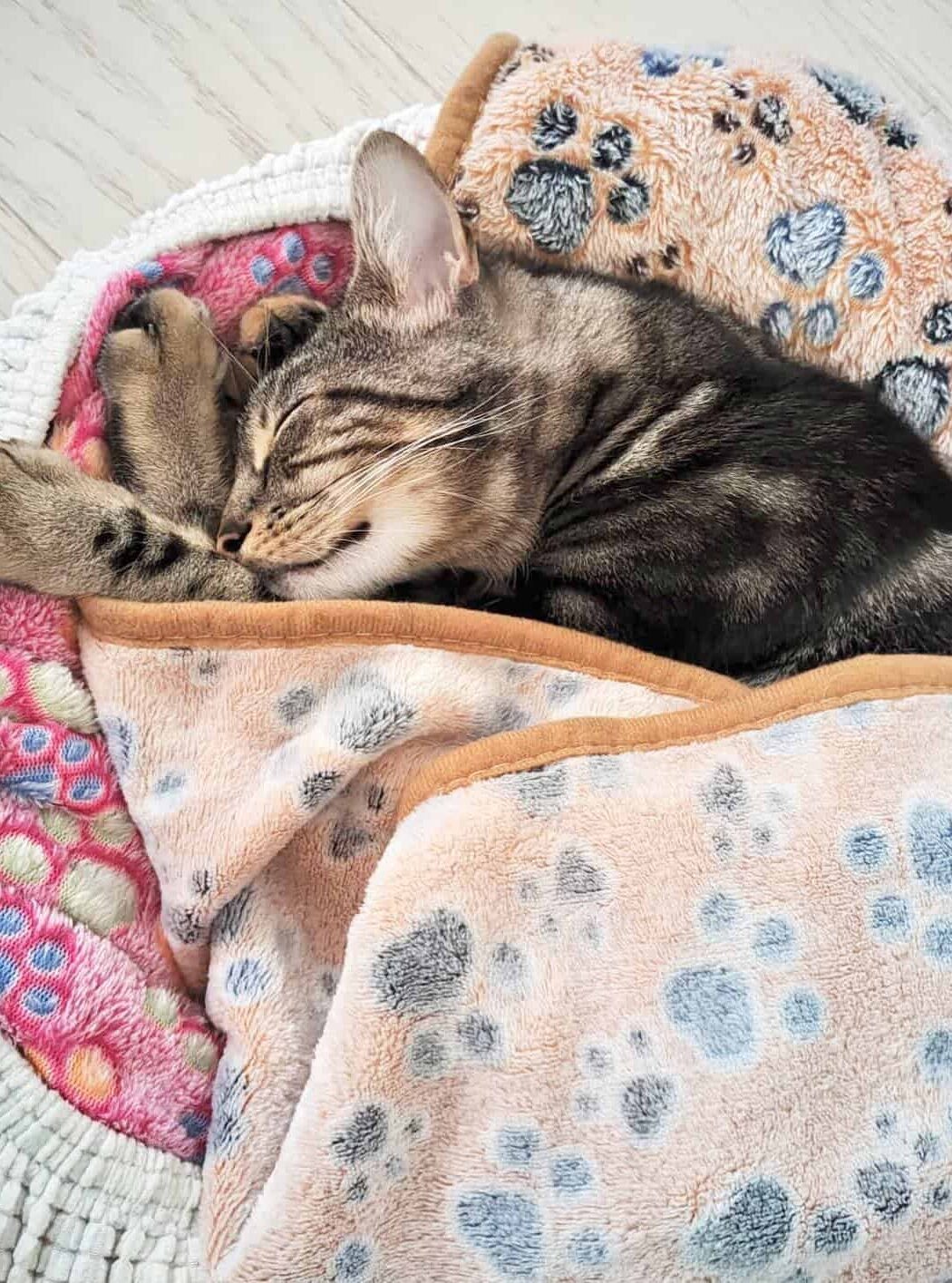Dieffenbachia is a perennial herb in demand for its attractive variegated foliage.
However, this shade-tolerant plant is found to be toxic to pets, counting cats.
But the good news is the toxicity of Dieffenbachia can be cured with proper diagnosis and treatment.
Follow this article for more information.
Table of Contents Show
Is Dieffenbachia Toxic to Cats?
According to ASPCA, Dieffenbachia (Tropic Snow, Giant Dumb Cane, Dumbcane, Exotica) are toxic to cats and dogs.

The crystals of Calcium Oxalate penetrate the mucosa membrane of the mouth and esophagus.
An article by the National Library of Medicine clearly states that Dieffenbachia can affect every domestic animal, but cats are relatively more sensitive to the toxins.
Symptoms of Dieffenbachia Poisoning
Oral exposure to Raphides (Calcium Oxalate crystals) releases proteolytic enzymes, leading to threatening symptoms.
Moreover, the condition may worsen in case of massive inhalation of parts of Dieffenbachia, leading to severe signs as below.
- Severe gastrointestinal discomforts: The toxins from Dieffenbachia induces sensation in the stomach leading to diarrhea.
- Convulsions: Your cat may show weird neck movement and suffer from seizures causing the eyelids to twitch and aggressive behavior.
- Redness and blindness: If your cat unknowingly rubs the eyes with the sap-containing paws, it turns red and swells, causing problems in sight.
- Liver failure: Disease associated with the liver starts to emerge, like anorexia (loss of appetite), Jaundice (yellowing of skin and eyes), and blood clotting.
- Coma: If not cared for on time, your cat might completely lose consciousness.
According to the National Scientific Conference Journal book, Kidney Tubular Necrosis can occur in severe cases.
DIY Diagnosis of Dieffenbachia Poisoning
Look for the listed signs to clarify whether your cat has fed on the Dieffenbachia plant.
- The chewed part of leaves lingers around the area it feeds on and has leftovers inside its mouth.
- Cuts and damages in the foliage and shoot part are observed in Dieffenbachia.
- Active cats start being lazy and weak in appearance.
- Signs of digging around the plant in the pot and soil dust beneath the pot can also show whether your cat went near the plant.
- Your cat will show some of the initial symptoms of toxicity, like itching, watery and red eyes, redness in the skin, and vomiting with continuous urination.
- After inspecting all the signs, you can guess if your cat has undergone Dieffenbachia poisoning.
Treatment for Dieffenbachia Poisoning
To prevent any mishap from occurring, follow the first aid home remedies and treatment tips.
- Remove any leftover pieces of the plant part from the cat’s mouth.
- You can wash the part with soapy, warm water for dermal exposure.
- Feed the cat with milk and yogurt as it helps to cool down the sensation in the gastrointestinal tract, or feed with activated charcoal.
- Immediately call the Pet Poison Helpline ( 855-764-7661) for further precautions.
Do not induce vomiting in cats until recommended by the experts.
- If your cat vomits naturally, keep it aside from the reach of other pets and children.
Here I have listed some first aid kits containing every piece of equipment necessary for those having a pet.
| Name of first Aids Kits | Brand |
|---|---|
| Portable Compact First Aid Kit | Johnson & Johnson |
| Pet First Aid Cat Kit | Rayco International |
| RC Pet First Aid Kit | RC Pet Products |
| Certified Pet First Aid Kit | NM2 |
| American Supplies Pet First Aid Kit | American Pet Supplies |
If the Pet Poison Helpline is unavailable, you can try ASPCA Animal Poison Control Center ( 888-426-4435).
Watch the following video for further help!
After learning the treatment, you might try to help your pet on your own, but better to avoid it and let the expertise work.
Recovery of Dieffenbachia Poisoning in Cats
After consulting with the vet, the cats probably re-energize in about a day or weeks, depending on the consumption and severity.
Meanwhile, the ASPCA Animal Poison Control estimates that about twenty-five percent of pets recover within two hours.
To boost recovery, feed the cats with soft, liquid food as the toxicity makes the gastrointestinal tract sensitive.

Also, allow cats to rest as much as possible because animals save energy by having a sound sleep and rest.
How to Prevent Dieffenbachia Poisoning in Cats?
Here are some tips to keep your cat in check.
- Change the location: Move the Dieffenbachia pots from the reach of cats, and keep your cat from roaming outside. Best to keep the plant inside a greenhouse, glass vivarium, or closed room.
- Use cat repellents: Cat does not like the odor of plants like lavender, citrus, and rosemary and of oils like neem and peppermint, which will also act as a pest repellent.
- Place sticky tapes: Cats do not like stickiness around their feet. So having the sticky part upside down helps to scare off the cat.
- Use a hanging basket: Dieffenbachia can also be suitable as a hanging plant that helps keep the cats away.
- Grow cat grass: Cat Grass is a mix of wheat, barley, and oats, grown in a pot to let the cat nibble on it with health benefits in consideration and helps to divert the cat’s attention.
- Enrich the surrounding with toys: Cats are jolly pets and always like to play. So better to fill your house with toys to let your furry friend spend more time with them instead of plants.
From Editorial Team
Conclusion!
Variegated leaves attract cats to Dieffenbachia, but the sad thing, they are mildly toxic to them.
However, use safe cat repellent sprays for your plants and cats.
Safe planting!


